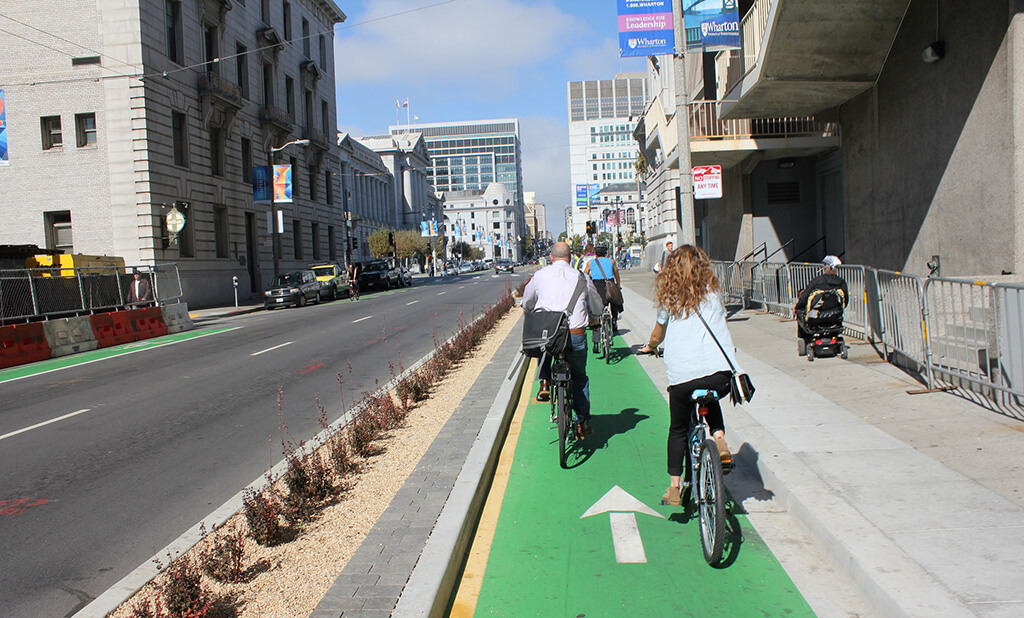Autumn Gear Guide
Find inspiration in our Gear Guide that will keep you out on your bike through wind or rain.
Download NowIf you’re a cyclist looking to get a piece of the car-free or car-light life, Hoboken, N.J., might be your dream city. A new ranking released by Realtor.com and Local Logic identifies the most eco-friendly cities in the U.S. for car-free transit — and Hoboken leads the charge. With nearly 80% of its residents commuting […]
If you’re a cyclist looking to get a piece of the car-free or car-light life, Hoboken, N.J., might be your dream city.
A new ranking released by Realtor.com and Local Logic identifies the most eco-friendly cities in the U.S. for car-free transit — and Hoboken leads the charge. With nearly 80% of its residents commuting without a car, Hoboken is joined at the top by Cambridge and Brookline in Massachusetts, as part of a broader trend that sees Northeast and West Coast cities dominating the list.
The rankings, based on U.S. Census data and Local Logic’s proprietary walk, bike, and transit scores, highlight places where infrastructure and urban design support active and sustainable mobility — particularly for those looking to cycle more and drive less.
Cycling Comes Standard
For urban cyclists, the list offers a roadmap to cities that are already doing the heavy lifting. Cambridge, Mass., for instance, has invested in separated bike lanes along key corridors like Massachusetts Avenue, while cities like Berkeley, Calif., and Somerville, Mass., have embraced “slow streets,” bike boulevards, and dedicated multi-use paths that make active transportation both safe and convenient.
Vincent-Charles Hodder, CEO of Local Logic, emphasized that these rankings go beyond green marketing. “How we move through our cities is deeply tied to sustainability,” he said. “Our data shows which communities are truly enabling those low-impact choices.”
A Snapshot of America’s Car-Free Leaders
Here’s a look at the top 10 cities for eco-friendly commuting:
Hoboken, N.J. — Compact, dense, and incredibly walkable, Hoboken pairs a historic grid with modern transit access, including PATH trains and ferries to Manhattan. The city was among the first to roll out a citywide bike-share program.

Hoboken, New Jersey bike path
Cambridge, Mass. — Home to MIT and Harvard, this city doesn’t just excel at academics — it’s a national leader in urban cycling, with high-quality infrastructure and Red Line access fueling a 72.8% car-free commute rate.
Brookline, Mass. — This suburb of Boston blends historic charm with Green Line access and pedestrian-oriented zoning, creating a place where walking and biking are natural parts of everyday life.
Berkeley, Calif. — Long known for its progressive politics, Berkeley backs it up with policy: BART access, protected bike lanes, and streets designed for people, not cars.
Washington, D.C. — The capital city boasts a 63.5% car-free rate thanks to Metro coverage, an expansive bike-share system, and an ambitious Vision Zero initiative.

San Francisco’s Polk Street protected bike lane (Photo by Nick Falbo, Alta Planning)
San Francisco — A famously hilly city that still manages to score top marks for pedestrian and transit access, thanks to initiatives like car-free Market Street and strong Muni/BART coverage.
Somerville, Mass. — Bike-friendly by design, Somerville continues to invest in car-free commuting with routes like the Somerville Community Path and dense, transit-rich neighborhoods.
Boston, Mass. — The city’s Go Boston 2030 plan aims to increase equity and sustainability through protected bike lanes, redesigned intersections, and expanded transit access.
Seattle — With more than half of residents commuting car-free, Seattle’s investments in light rail and a growing bike network are reshaping how people get around, especially in neighborhoods like Capitol Hill.

Two people cycling in Seattle
Arlington, Va. — Leveraging a smart-growth “urban villages” model, Arlington focuses development around Metro stations, creating bikeable, walkable communities just minutes from D.C.
Affordability Meets Access? Not Always
While many of these cities lead on sustainable transport, that accessibility often comes with a price tag. Median home prices in places like Brookline ($2.55 million), Cambridge ($1.41 million), and Culver City ($1.35 million) show that eco-friendly living isn’t always affordable. Still, cities like Chicago and Minneapolis offer a more budget-friendly mix of cycling infrastructure and transit access.
Cyclist’s Takeaway
For cyclists considering a move — or urban planners looking for a model to emulate — this ranking confirms what many already know: that strong cycling infrastructure is rarely an accident. It’s the product of intentional investment, thoughtful design, and political will. And as climate concerns and car culture fatigue continue to grow, these cities may offer a glimpse into the future. At least, we hope so.
Find inspiration in our Gear Guide that will keep you out on your bike through wind or rain.
Download Now
Leave a comment